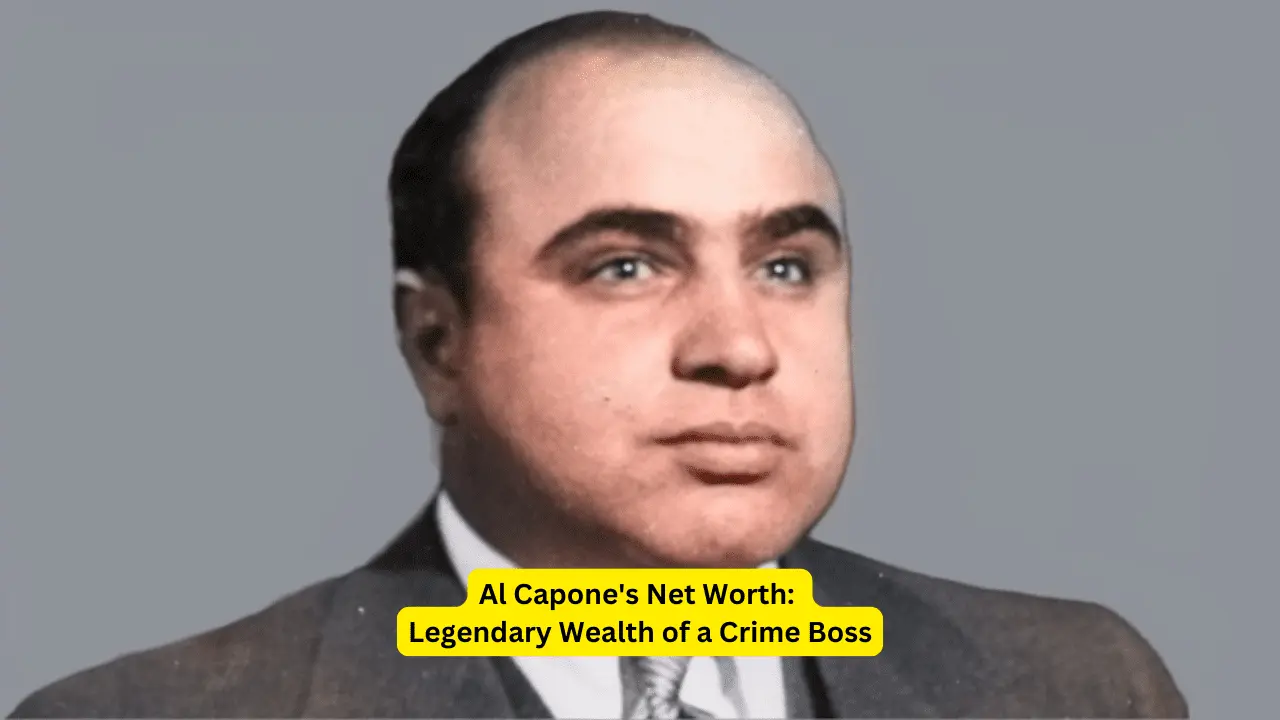Al Capone, often regarded as one of the most notorious gangsters in American history, accumulated immense wealth through his criminal empire during the Prohibition era. Al Capone’s net worth, with a vast criminal empire he built in 1920s Chicago, reached the modern equivalent of $1.5 billion. This staggering figure reflects the power, influence, and control he wielded over various illegal activities, including bootlegging, gambling, and racketeering. Al Capone’s Net Worth: Wealth of Crime Boss.
Rise of Al Capone: Beginnings to Criminal Mastermind
Al Capone was born on January 17, 1899, in Brooklyn, New York, to Italian immigrant parents. Growing up in a tough neighborhood, he quickly became involved in petty crimes, leading him down a path that would ultimately make him one of the most feared and wealthy criminals in the United States. His rise to power began when he moved to Chicago in the early 1920s, where he worked under the mentorship of Johnny Torrio, a well-known crime boss.
Building the Empire: Bootlegging Business
The Prohibition era (1920–1933) was a period of time when the sale and distribution of alcoholic beverages was illegal in the United States. This period created a lucrative opportunity for organized crime, and Capone took advantage of it. By establishing an extensive bootlegging operation, he soon became the dominant figure in Chicago’s underworld.
Capone’s control of the city’s illegal liquor trade brought him enormous profits. His operation was so efficient that it reportedly grossed nearly $100 million annually. This impressive revenue stream was the basis of Al Capone’s net worth, which continues to fascinate historians and crime buffs today.
Gambling, Prostitution, and Protection Rackets
The cornerstone of Capone’s empire was bootlegging, but he was not satisfied with just one source of income. He diversified his criminal activities to include gambling, prostitution, and protection rackets. These ventures added significant wealth to his already vast fortune.
Capone’s gambling operations ranged from underground casinos to bookmaking rings, all of which were highly profitable. His control over Chicago’s vice district ensured that he could extract money from nearly every illegal activity that occurred in the city. Additionally, Capone’s involvement in prostitution rings provided another steady income source, further increasing his net worth.
Protection Rackets:
The most frightening aspect of Al Capone’s criminal empire was the use of protection rackets. Business owners across Chicago were forced to pay Capone’s men for “protection” from threats both real and fabricated. This system of extortion was highly effective, as those who refused to pay were often faced with violence or the destruction of their property.
The money generated from these protection rackets added millions of dollars to Capone’s wealth. His ability to instill fear in those around him was a testament to his power and influence, making him one of the wealthiest criminals of his time.
Tax Evasion and the End of the Empire
Despite his wealth and power, Al Capone’s criminal empire was not invincible. In the early 1930s, the federal government began cracking down on organized crime, and Capone became a prime target. Unable to charge him with any of his more serious crimes, authorities eventually convicted him of tax evasion in 1931.
Capone was sentenced to 11 years in federal prison, which was a major setback to his criminal operations. Although he retained a portion of his wealth during his imprisonment, his empire began to collapse. By the time he was released from prison in 1939, his health had deteriorated, and his influence in the criminal underworld had diminished.
Al Capone’s tradition: Wealth, Power, and Notoriety
Al Capone’s net worth remains a symbol of his legendary status in American history. His ability to amass such vast wealth through illegal means is both fascinating and terrifying. Despite his eventual downfall, Capone’s name continues to be synonymous with organized crime and the excesses of the Prohibition era.
Today, historians estimate that Al Capone’s net worth, adjusted for inflation, would be around $1.5 billion. This figure reflects not only the immense profits he generated through his criminal enterprises but also the lasting impact he had on American culture and the history of organized crime.
Conclusion:
Al Capone’s net worth is more than just a number; it represents a complex and dark chapter in American history. His rise to power, his control over a vast criminal empire, and his ultimate downfall are stories that continue to captivate the public’s imagination. As we reflect on Capone’s life and legacy, we are reminded of the thin line between wealth and power, and the consequences of a life lived outside the law.
